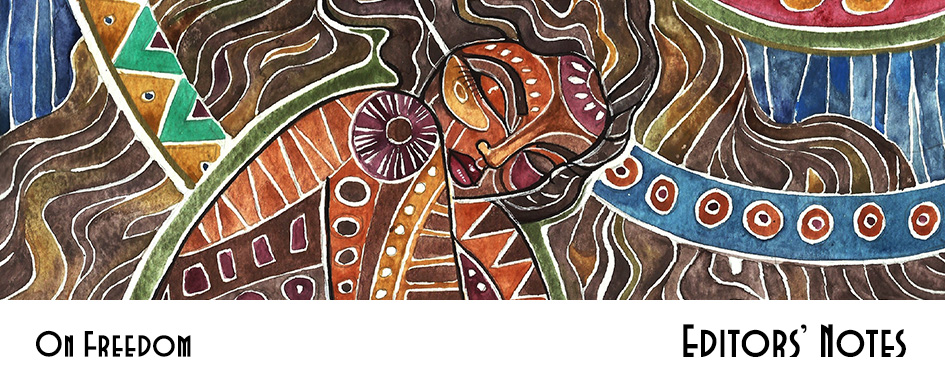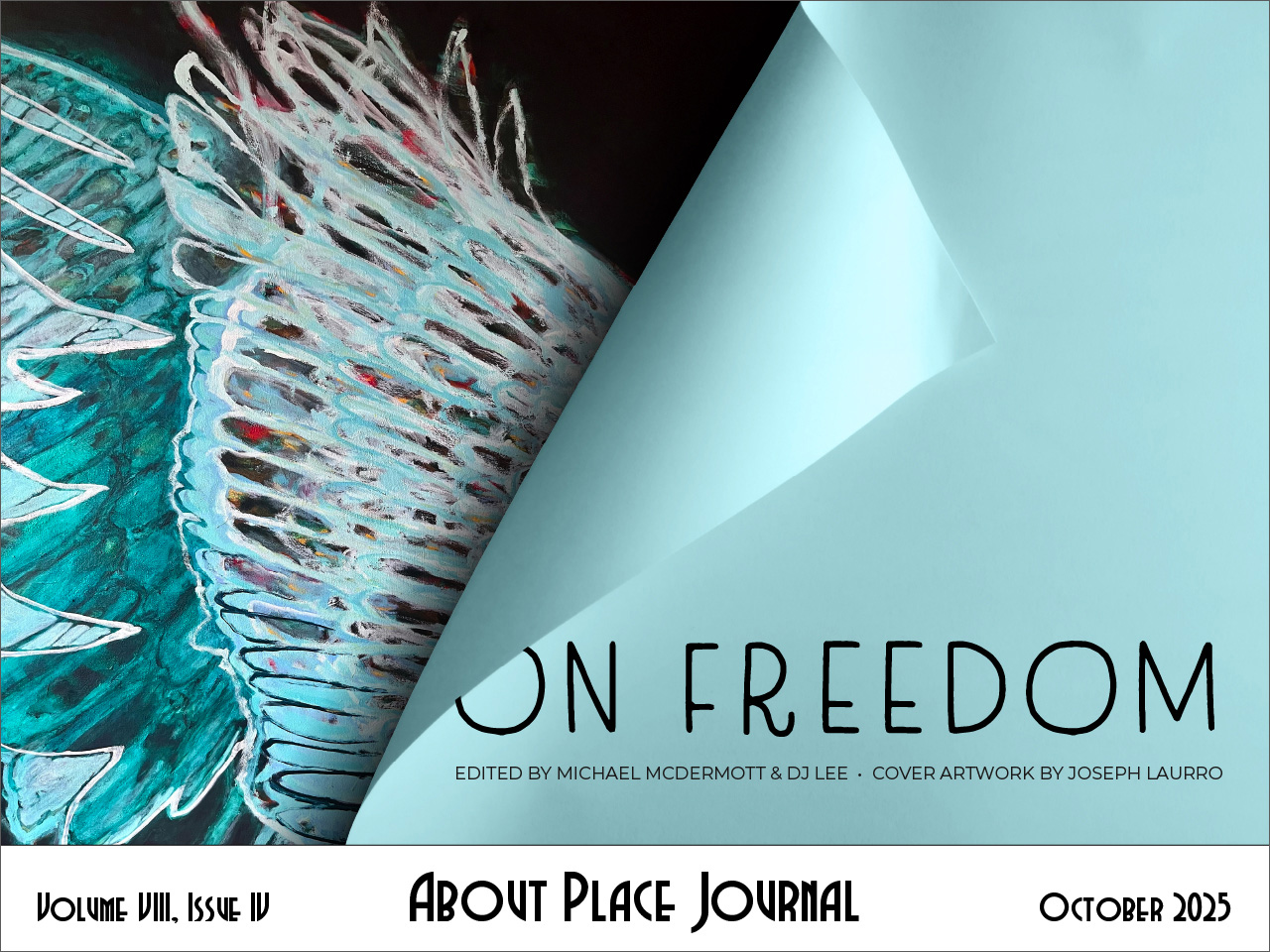The word “freedom” streams across our feeds with astounding speed, from debates over freedom of movement and immigration, to battles over freedom of speech, freedom of faith, and many personal and collective liberties. While “freedom” is often a rallying cry, it is also stubbornly resistant to simple definitions. Still, freedom is a basic human need, something so dear that people fight and die for it.
While freedom’s richness can be traced to ancient philosophers such as Aristotle, we think the concept and practice is best illustrated by two recent works that share the title of this issue of About Place Journal: Maggie Nelson’s On Freedom: Four Songs of Care and Constraint and Timothy Snyder’s On Freedom. Nelson explores what she calls “ongoing practices of freedom” that emphasize our interconnectedness and the care for one another at the heart of genuine liberation. Snyder argues for a refocus of the concept away from negative liberty (freedom from) to a positive “freedom to.” Drawing on his experiences in Ukraine, Snyder shows how true freedom requires not just absence of oppression but presence of conditions that allow people to flourish.
The Black Earth Institute (BEI) was formed after the 2004 election in response to increasing reactionary policies and threats to freedoms that had been fought for over the previous century. The founders recognized the power of contemporary art and literature to serve earth, spirit, and social justice. Yet the dangers the founders feared in 2004 have materialized today. Many governments the world over are moving toward authoritarianism, including our own. This issue of About Place Journal speaks directly to both freedom from the dangers that oppress us and freedom to express ourselves through art and literature. On Freedom is the kind of art and literature these times demand.
We are grateful for all who submitted. The astounding number and quality of contributions from poets, prose writers, playwrights, and artists confirms that freedom is far from being a settled concept. Instead, it remains a living question. The pieces we received from people in their late teens, twenties, and early thirties were so numerous and compelling that we knew they deserved their own dedicated section—SUCCESSION: YOUNG WRITERS AND ARTISTS. With flair and honesty, these artists and writers articulate what it means to move, gather, speak, and exist in a world they are reshaping. This section’s featured artwork, “Color in the Wind,” shows a kite dancing in a gray sky. Like the kite, the voices of this generation rise with urgency to resist limitations and build an emancipated future.
The CROSSINGS section highlights work that involves traversing borders and venturing into difficult and perhaps unknown territories. The transformations experienced by individuals who journey to these places help us understand how crossings can bring freedom from forces that oppress and freedom to engage in creative work. Many pieces in this section illuminate freedom’s ongoing necessity. For instance, while past limitations on women’s rights in divorce have led to greater equality, the overturning of Roe v. Wade represents a major loss of freedom. These crossings also present new challenges in how to respond to past unfreedoms. Several works explore death from both disease and the intentional pursuit of freedom. In every case, CROSSINGS presents the complex challenge of change.
What happens when freedom is taken? The pieces in BODY POLITIC speak to the history and presence of resistance through poetry, prose, and graphic art. Some refer to past horrors where freedom, though limited, was gained by those who were enslaved. Others present contemporary events that threaten our freedom over our health and bodies. We offer multiple forms of response here, from exposing the missing liberties of the poor to challenging governmental attacks on our rights. These works boldly reflect the importance of our historical moment.
As Timothy Snyder points out, freedom is often considered FREEDOM FROM. There are many forces, whether governmental or cultural, that restrict speech or practice and deny what is desired by rights or justice. FREEDOM FROM gives voice to some of the many ways that freedom can be gained by exposing the power from above. Others show how the quest for freedom can be questioned and debated. Still more show how to escape to or find respite in free activities.
Writers and artists have long drawn power from the natural world to declare independence, find refuge from constraint, and celebrate landscapes, seasons, or nonhuman life, as they do in WILD SPACES. Some pieces in this section capture the possibility of escape through identification with natural processes. Others address birds and mammals, seeking wisdom in a world ravaged by climate change and political violence. Still others guide readers from addictive online engagement to the sensual present of noticing a squirrel, shoveling snow, or reading a meadow.
What does it mean to find freedom in the intimate scale? The pieces in FREEDOM OF DAILY LIFE explore the possibility of liberation in a world that presses us to dedicate every moment to productivity. Under an unequal global economy, delicate acts like tending a small garden plot, choosing stillness over motion, talking with a fellow commuter on a bus ride across town, or witnessing a child’s joyful flight down a sidewalk on a skateboard carry special meaning. Here, readers will find a mother’s hands moving through her own hair as an act of self-possession and a solitary walk as resistance against a global culture that monetizes connection. The writers and artists in this section show us how to find freedom in the decision to notice, to pause, to move slowly, and to breathe deeply.
Freedom, as the pieces in this issue show, is an ongoing struggle. It is also a daily practice that requires individual courage and collective care, resistance to oppression, fierce protection of joy in small moments, and the radical act of believing in each other’s worth.


